Bearish Candlestick Patterns
Candlestick pattern bearish is a visual presentation of a potential trend reversal. So what is the candlestick pattern bearish? Let’s find the answer below.
Utilize candlestick pattern bearish as predictive tools for forecasting future price movements. Explore prevalent candlestick patterns and learn how to leverage them effectively to identify potential trading opportunities.
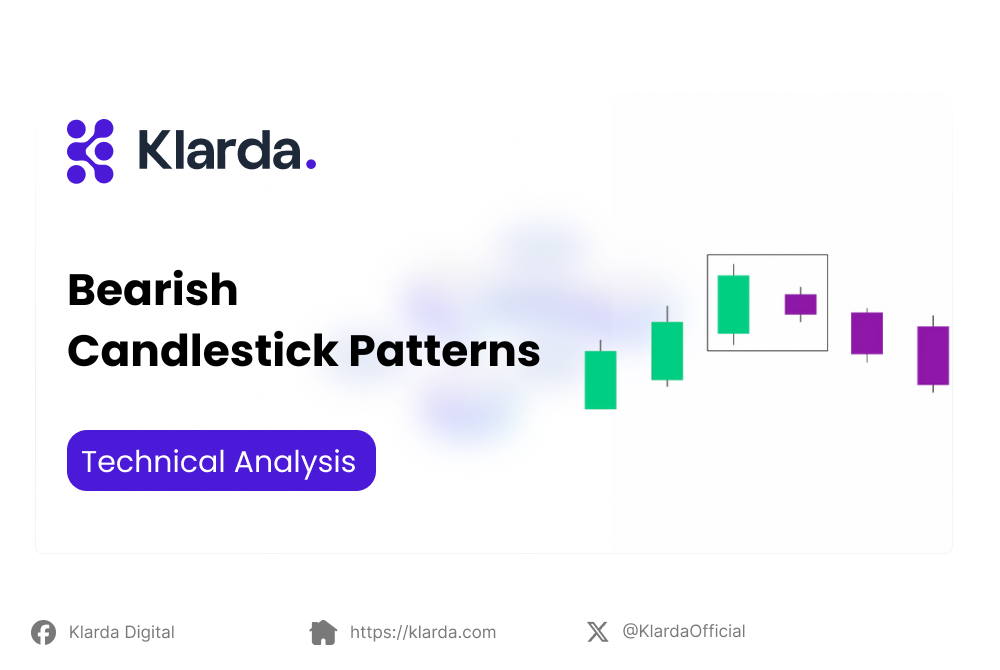
KEY TAKEAWAYS
- A bearish candlestick pattern serves as a visual indication of a potential reversal in the stock market trend, symbolizing a battleground between buyers (bulls) and sellers (bears).
- The summary covers various types of bearish candlestick patterns, each providing insights into potential market reversals or continuation of downtrends.
WHAT IS BEARISH CANDLESTICK PATTERN
A bearish candlestick pattern signals a potential trend reversal in the stock market, reflecting a battle between buyers (bulls) and sellers (bears). A bearish candlestick typically has a long upper shadow, indicating failed attempts by bulls to push the price up.
The red or filled body signifies a lower closing price than the opening, with the body length indicating selling pressure intensity. Common bearish patterns include the Bearish Engulfing Pattern and the Shooting Star, serving as warning signs for potential market downturns.
HOW TO TRADE BEARISH CANDLE PATTERNS
Candlestick patterns are a tool in technical analysis that shows how a stock's price moves. Analyzing these patterns helps predict future price movements.
Bearish candlestick patterns indicate a potential price drop, making it a good time for short trades. However, different bearish patterns require specific trading approaches.
When trading bearish patterns, look for quick price movements since short trades are limited to a day. Ensure the overall trend is downward before entering. Follow these steps:
- Check Trend: Confirm a downward price trend.
- Entry Point: Enter when a bearish pattern aligns with a strong supply zone.
- Target and Stop Loss: Set a 1:2 ratio for target and stop-loss points from the entry.
Trading bearish patterns is risky if the overall trend isn't favorable. Carefully assess all aspects before initiating a short trade. Next, we'll explore trading individual bearish candlestick patterns.
TYPES OF BEARISH CANDLE PATTERNS
Bearish engulfing candlestick pattern
The bearish engulfing pattern signals the end of an uptrend, marked by a small green candle being overshadowed by a subsequent larger red candle.
This suggests a peak in price momentum and warns of an impending market downturn. The depth of the red candle's descent indicates the potential impact on the trend.
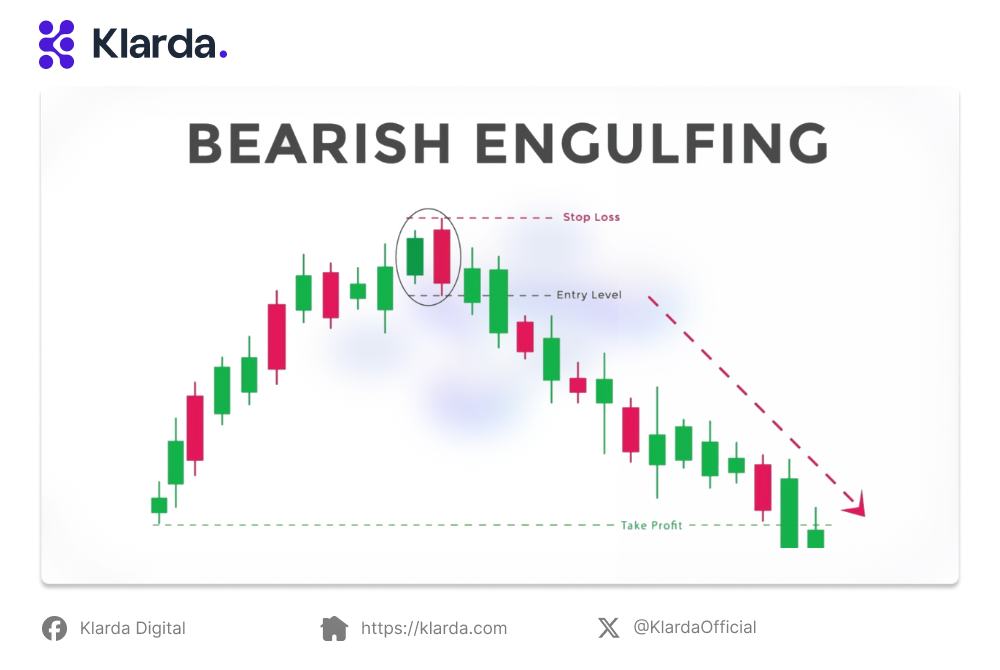
A bearish engulfing pattern has a small green body.
Bearish reversal candlestick pattern
The bearish engulfing pattern signals a bearish reversal, indicating the end of an uptrend and anticipating a price decline. It marks a shift as sellers become dominant, leading to a downtrend. The pattern involves two candles, with the second bearish candle fully engulfing the preceding green candle's body.
Bearish kicker candlestick pattern
The bearish kicker candlestick pattern signals a swift shift from an uptrend to a downtrend. Identified by a large bearish candle opening significantly lower than the previous bullish candle, it indicates strong selling pressure and a potential reversal.
Traders use this pattern as a signal for bearish positions, anticipating sustained downward movement and gaining insights for informed decision-making in financial markets.
Bearish spinning top candlestick pattern
The spinning top candlestick pattern, characterized by a short body between equally extended wicks, signifies market indecision and minimal price movement. It often appears after a significant uptrend or downtrend, reflecting a balance between bullish and bearish forces.
While a spinning top alone is a neutral signal, its interpretation suggests it could indicate early signs of impending changes, signaling a potential shift in market control.
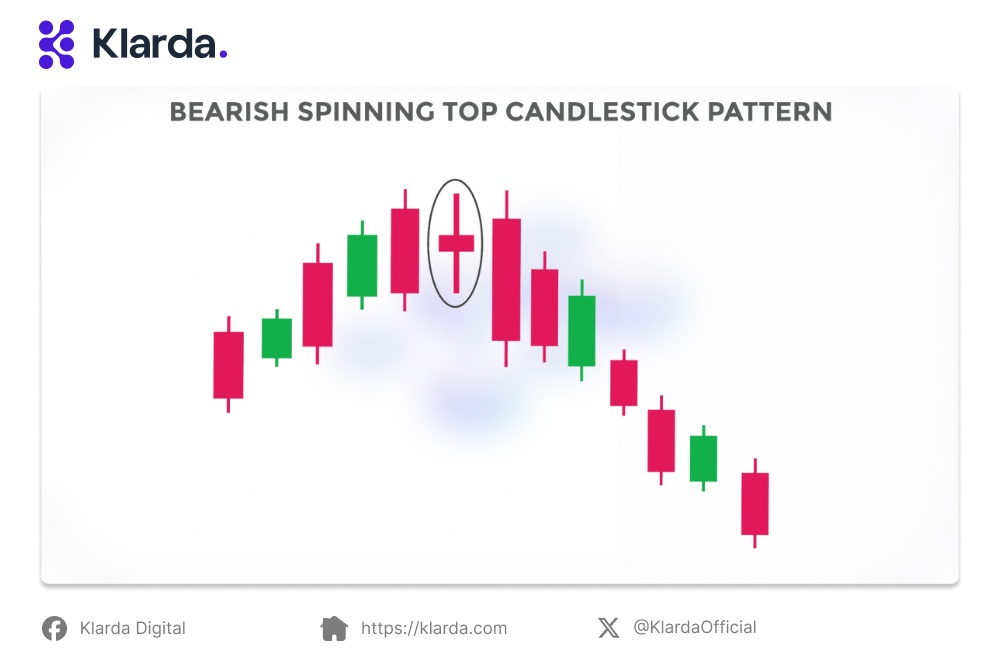
The spinning top candlestick pattern has a brief body.
Bearish marubozu candlestick pattern
The bearish marubozu candlestick pattern is a robust signal in technical analysis, indicating strong bearish sentiment. It features a long, solid bearish candlestick with minimal to no upper or lower wick, suggesting sustained selling pressure throughout the session.
Traders view the bearish marubozu as a compelling sign of significant bearish momentum, signaling potential continuation of a downtrend. Understanding this pattern provides valuable insights into market sentiment for traders considering bearish strategies.
Bearish three line strike candlestick pattern
The three-line strike candlestick pattern consists of three consecutive extended red candles with minimal or no wicks. Despite opening at similar prices, persistent selling pressures drive the closing price lower each day.
Traders interpret this pattern as the start of a bearish downtrend, signifying sellers dominating buyers over three consecutive trading days.
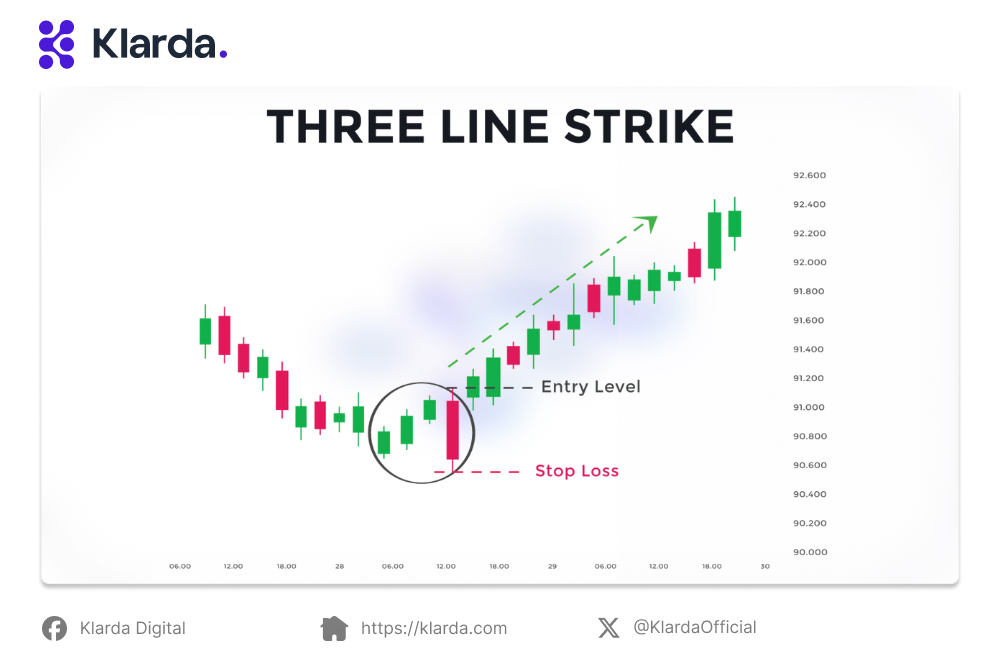
The three-line strike is a very strong bullish signal.
Bearish piercing candlestick pattern
The piercing line pattern comprises two candlesticks: a long red one followed by a lengthy green one, often with a significant downward gap. This indicates strong buying pressure, pushing the price upward to, or beyond, the mid-price point of the previous day.
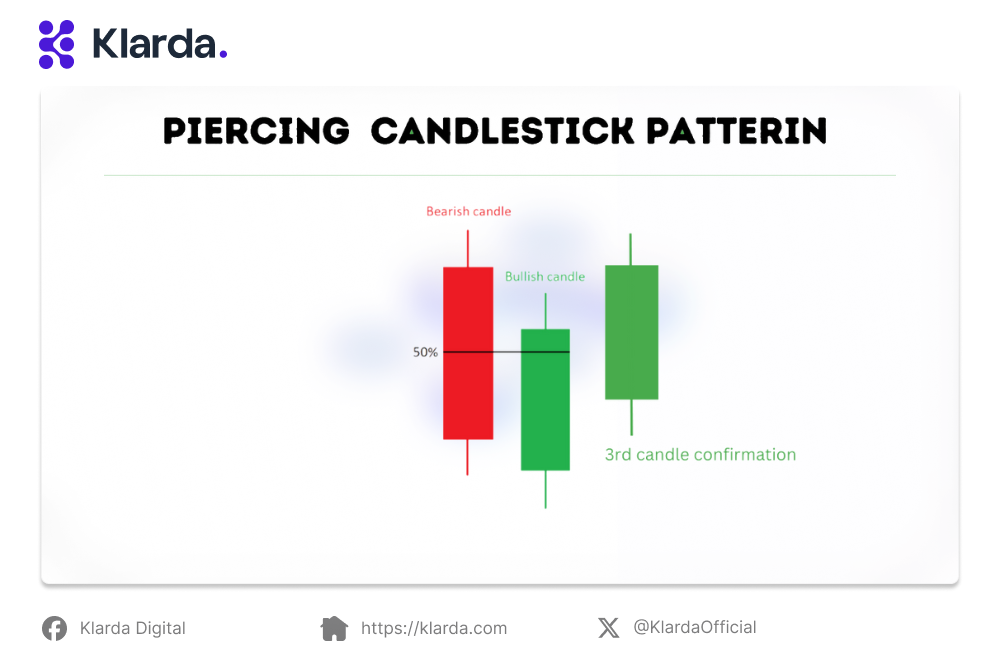
The piercing line made up of a long red candle.
Bearish inverted hammer candlestick pattern
The hammer candlestick, found at the end of a downtrend, has a short body and an extended lower wick, indicating strong buying momentum overcoming selling pressures. The color may vary, with a green hammer suggesting a stronger bull market.
The inverted hammer, resembling the hammer but with a shorter lower wick, signals initial buying pressure followed by weak selling, suggesting an imminent shift in control towards buyers.

The hammer candlestick pattern is found at the bottom of a downward trend.
Bearish pin bar candlestick pattern
The bearish pin bar candlestick pattern, a crucial signal in technical analysis, indicates potential reversals in market trends. Identified by its distinctive appearance—a small body with a long upper wick resembling a pin—it suggests a rejection of higher prices. This signifies that buyers initially drove prices up but faced strong selling pressure, leading to a sharp reversal.
Traders often view the bearish pin bar as a signal that bearish momentum may be gaining strength, making it a potential precursor to a downward market movement. Understanding this pattern is valuable for informed decision-making in market entries and exits.
Bearish doji candlestick pattern
When the open and close of a market are nearly identical, the resulting candlestick takes on the appearance of a cross or plus sign. Traders should observe a body that is short to non-existent, accompanied by wicks of varying lengths.
The doji pattern signifies a battle between buyers and sellers, leading to no overall gain for either side. While a doji on its own is a neutral signal, it often appears in reversal patterns such as the bullish morning star and bearish evening star.
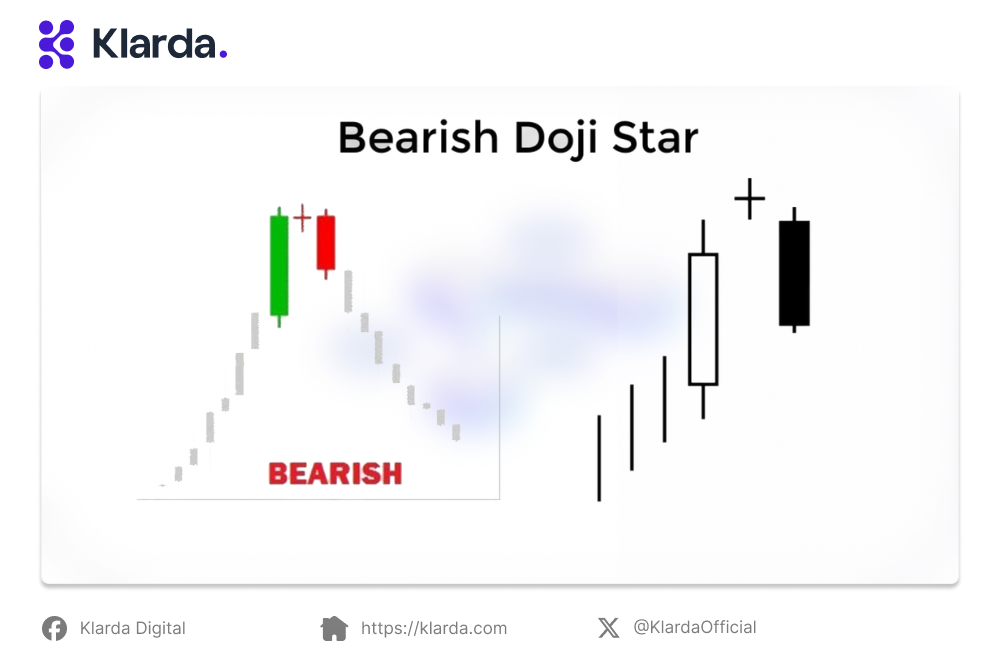
This doji’s pattern is neutral signal.
Bearish shooting star candlestick pattern
The bearish shooting star candlestick pattern is a significant signal in technical analysis, suggesting a potential reversal in market sentiment. It features a small body, a long upper wick, and little to no lower wick, resembling an inverted candle. Typically occurring after an uptrend, it indicates that buyers initially pushed prices higher, but sellers took control by the session's end, rejecting higher levels.
Traders often interpret the bearish shooting star as a warning of potential bearish momentum, aiding in anticipating downward price movements and adjusting trading strategies. Understanding this pattern enhances traders' ability to navigate changing market conditions.
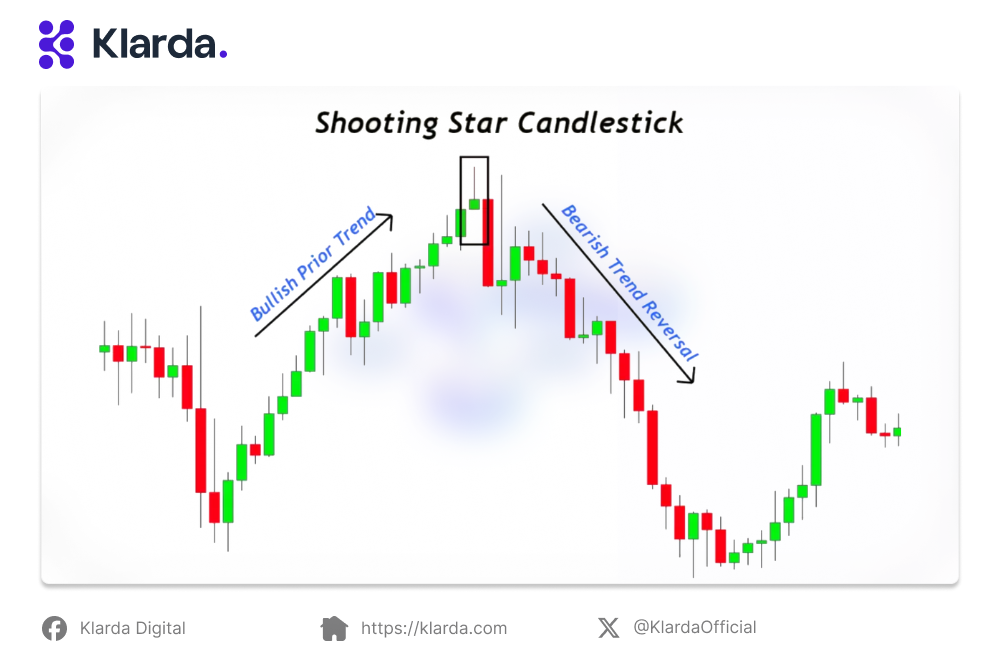
The bearish shooting star candlestick pattern has a small body, a long upper wick, and little to no lower wick.
Bearish belt hold candlestick pattern
The bearish belt hold candlestick pattern is a significant signal in technical analysis, indicating potential bearish momentum. Typically following an uptrend, it features a single bearish candlestick with a small or no upper shadow and a long lower shadow.
Opening near the session's high and closing near its low, it resembles a downward belt, suggesting strong selling pressure from the session's start and often leading to a significant downward movement.
Traders interpret the bearish belt hold as a sign of bearish dominance, crucial for anticipating potential downtrends and adjusting trading strategies. Understanding this pattern enhances traders' ability to make informed decisions in response to evolving market conditions.
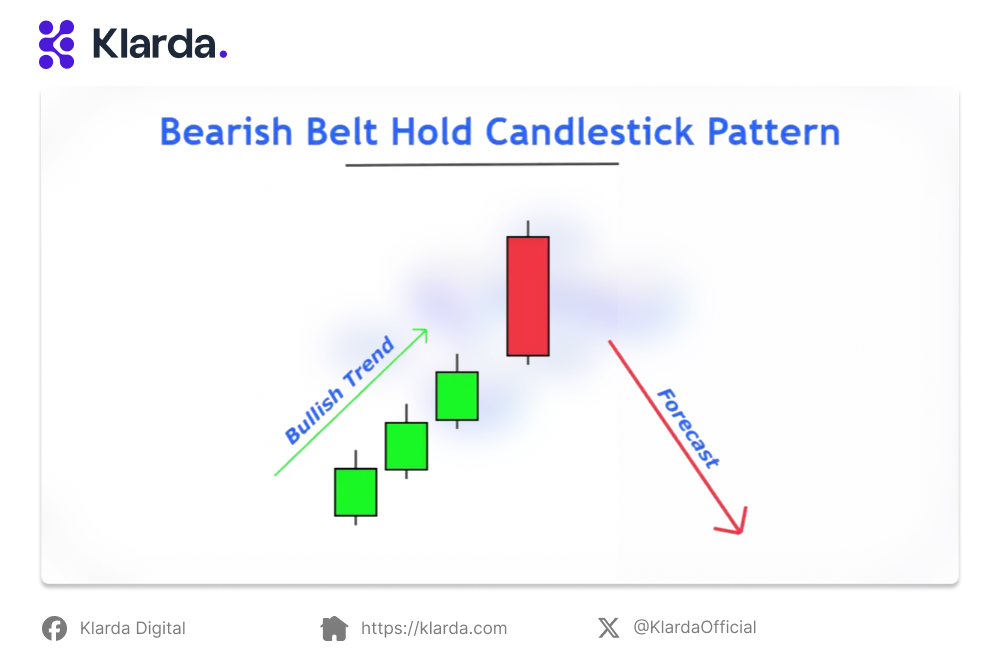
The bearish belt hold candlestick pattern is characterized by a single bearish candlestick.
Bearish tasuki line candlestick pattern
The bearish tasuki line candlestick pattern is a noteworthy signal in technical analysis, indicating a potential reversal of an uptrend. This pattern consists of three consecutive candlesticks, where the first is a bullish candle, followed by a bearish candle that opens higher than the previous close and closes below it.
The third candle is another bearish candle that opens below the second candle's close but fails to close below it, creating a gap between the second and third candles. The bearish tasuki line suggests a struggle between buyers and sellers, with the bears gaining control by the end of the pattern.
Traders often interpret this formation as a sign of weakening bullish momentum and a possible trend reversal. Understanding the dynamics of the bearish tasuki line aids traders in making informed decisions amid evolving market conditions.
Bearish meeting lines candlestick pattern
The bearish meeting lines candlestick pattern is a notable signal in technical analysis, indicating a potential reversal of an uptrend. It involves two consecutive candles: a bullish one followed by a bearish one opening at or near the close of the preceding bullish candle and closing lower. Resembling a meeting or intersection, this pattern signals a potential shift in market sentiment.
Traders interpret it as a sign that bullish momentum is fading, suggesting a possible change in trend direction as buyers encounter resistance. Understanding the implications of the bearish meeting lines pattern assists traders in making informed decisions amid evolving market conditions.
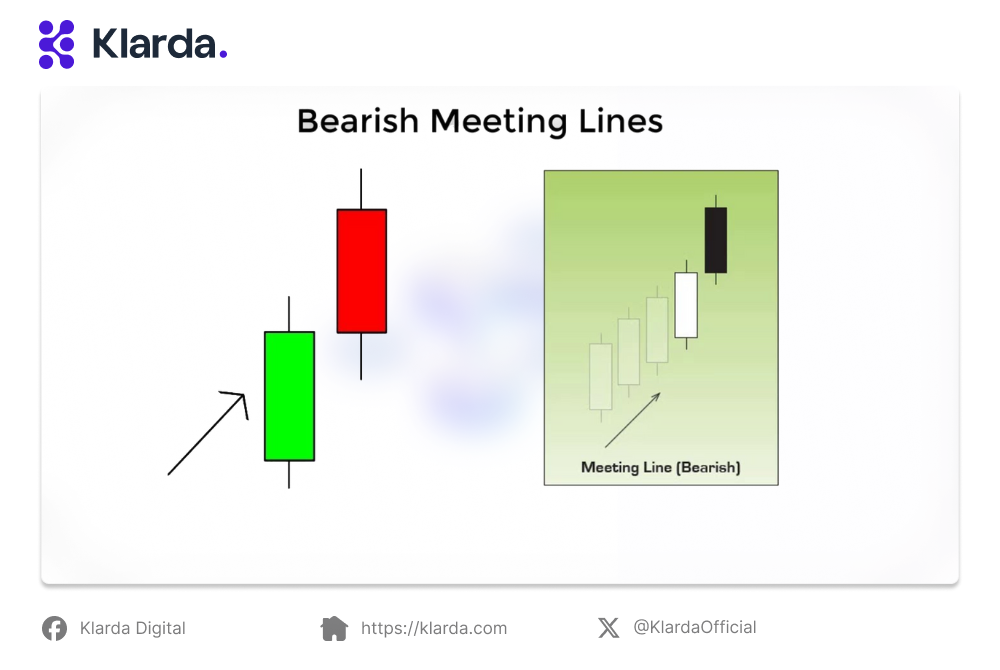
The bearish meeting lines candlestick pattern is a notable signal in technical analysis.
Bearish breakaway candlestick pattern
The bearish breakaway candlestick pattern is a significant signal in technical analysis, suggesting a potential reversal of an uptrend. It involves a series of bearish candlesticks following a long bullish candle, creating a visible breakaway from the prior trend.
Traders interpret this pattern as a sign of shifting market sentiment, with sellers gaining control and a potential weakening of prior bullish momentum. Understanding the bearish breakaway pattern helps traders make informed decisions and adjust strategies in response to changing market conditions.

The bearish breakaway candlestick pattern is a significant signal in technical analysis.
Bearish doji star candlestick pattern
The bearish doji star candlestick pattern is a technical signal indicating a potential reversal of an uptrend. It involves two candlesticks, with the first being bullish, reflecting the ongoing upward trend. The second is a doji, signaling indecision with nearly identical open and close prices. The appearance of the bearish doji star after an uptrend suggests a shift in market sentiment and a potential weakening of bullish momentum.
Traders interpret this pattern as a cautionary signal that may precede a reversal, indicating a possible downturn in prices. Understanding the dynamics of the bearish doji star helps traders make informed decisions and adjust their strategies accordingly.
Bearish flag candlestick pattern
The bearish flag candlestick pattern is a technical signal found in trending markets, indicating a potential continuation of a downtrend. It features a rectangular-shaped consolidation, resembling a flag, sloping against the prevailing trend. The flagpole represents the initial sharp price decline, followed by a consolidation phase with parallel trend lines forming the flag.
Traders interpret the bearish flag as a temporary pause before the downtrend resumes, anticipating further price decline after consolidation. Identifying this pattern involves recognizing both the flagpole and subsequent consolidation, providing valuable insights for traders anticipating potential downward movements in the market.
Understanding the various types of bearish candlestick patterns can be challenging for new investors. In such cases, Klarda becomes a perfect choice. Klarda's product pages offer comprehensive information, including price history, news, social media trends, and potential risks/rewards. Explore Klarda's user-friendly features for better decision-making in your investments.
Presented here is a comprehensive overview of the candlestick pattern bearish. We trust that this information will prove helpful in efficiently managing your wallets.
Updated 8 months ago